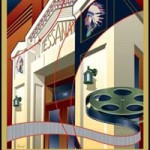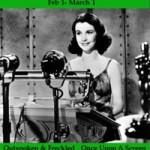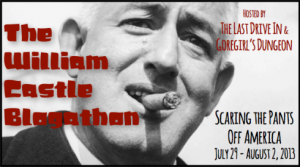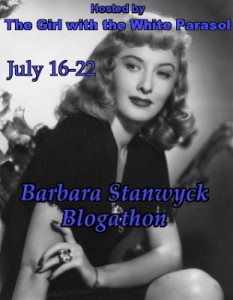Classic Movie Travels: Frank Morgan

Francis Phillip Wuppermann was born on June 1, 1890, in New York, New York, to Josephine Wright and George Diogracia Wuppermann. His father was born in Venezuela and of Spanish and German descent, while his mother was born in the United States and was of English descent. Francis was the youngest of 11 children, with five brothers and five sisters. His family had earned considerable wealth through the distribution of Angostura Aromatic Bitters via the Angostura-Wuppermann Corporation, marketing bitters for use in drinks and cocktails.
As a young boy, Wuppermann sang soprano in his church’s choir. He also took on odd jobs, including selling toothbrushes and advertisements, and bronco-busting—breaking a wild horse or bronco for riding.
Wuppermann attended Cornell University, where he was active in the Phi Kappa Psi fraternity and Glee Club. He soon pursued an interest in acting on stage, following in the footsteps of his brother, Ralph. While working in vaudeville, he changed his last name from Wuppermann to Morgan. His first stage performance was in Mr. Wu in 1914, followed by numerous appearances in other shows, including The Lullaby, Gentlemen Prefer Blondes, Topaze, The Band Wagon, and Hey Nonny Nonny!
In 1914, Morgan married Alma Muller. They had one son named George. The couple remained married until Morgan’s passing in 1949.
From 1916 to 1936, Morgan appeared in various silent films. His screen debut occurred in The Suspect (1916). Next, he worked in Raffles, the Amateur Cracksman (1917) with John Barrymore. Of his many siblings, he was closest to his brother, Carlos. While Carlos’ passing was initially deemed a suicide while serving in the United States Army’s Corps of Intelligence Police in Germany, it was later revealed that he was murdered by a fellow soldier. Carlos was a writer and actor, and Morgan appeared in his deceased brother’s play The Triumph of X (1921) on Broadway.

Once he became a contract player for MGM, Morgan appeared in Hallelujah, I’m a Bum (1933) alongside Al Jolson. He received an Academy Award nomination for Best Leading Actor for his performance as Alessandro, Duke of Florence, in The Affairs of Cellini (1934). He soon appeared in The Good Fairy (1935) with Margaret Sullavan, The Great Ziegfeld (1936) with William Powell and Myrna Loy, and Dimples (1936) with Shirley Temple.
In The Wizard of Oz (1939), Morgan carried out the titular role in addition to four other roles: Professor Marvel, the Gatekeeper, the “horse of a different color” carriage driver, and the Palace Guard. Morgan secured the role after the studio tired of W.C. Fields continually negotiating his potential pay for the part.

In 1939, Morgan was involved in a serious car accident in New Mexico. While he and his family survived, his chauffer did not.
While in the throes of his film career, Morgan also performed in radio. He co-starred with Fanny Brice in The Frank Morgan-Fanny Brice Show. When Brice left the program in 1944, Morgan continued for a year with The Frank Morgan Show. In 1947, he starred in the radio series The Fabulous Dr. Tweedy and also recorded several children’s records, including Gossamer Wump.
Over the years, Morgan proved to be an asset to the studio in not only bumbling, comedic roles but also in portraying more serious and downtrodden characters. He could be seen in Saratoga (1937), The Shop Around the Corner (1940), The Mortal Storm (1940), and The Human Comedy (1943). Morgan also received an Academy Award nomination for Best Supporting Actor in Tortilla Flat (1942). In addition, Morgan appeared in a compilation film called The Great Morgan (1946), theoretically playing himself albeit in familiar bumbling roles. In the film, Morgan jumps at the chance to produce a film, but it all goes awry when he edits several unrelated musical and comedy film clips together into his own film. This was considered to be a lost film until 1980, when one print was discovered, followed by yet another.
Morgan was known to drink in his dressing room. He occasionally carried a black brief case to work, fully stocked with a mini bar.
Morgan’s final film role was in Key to the City (1950), filmed in 1949 and released after his death. Morgan had actually filmed some scenes as Buffalo Bill for the musical Annie Get Your Gun (1950) when he passed away in his sleep from a heart attack on September 18, 1949. He was replaced by Louis Calhern in the role. Morgan was 59 years old. He was buried in the Wuppermann family plot in Green-Wood Cemetery in Brooklyn, New York. In 2003, his son was buried in the same family plot.
Today, there are some extant tributes and points of interest relating to Morgan’s life and career.
In 1900, Morgan and his family lived at 35 W. 124th St., New York, New York. By 1917, they relocated to 236 W. 70th St., New York, New York. Both of these homes have since been razed.
In 1920, Morgan, Alma, and George resided at 5 St. Lukes Pl., New York, New York, with servant Maria Johnson. This home stands today.

In 1927, Morgan and his family resided at 430 E. 57th St., New York, New York, per his application for joining the Sons of the American Revolution. This building also stands.

By 1940, Morgan and his family had relocated to 1025 Ridgedale Dr., Beverly Hills, California. Also in residence with them were a nurse (Ruth Halppner), maid (William White), cook (Elma Martin), and chauffeur (Annanzo White). This home also stands.

Morgan has two stars on the Hollywood Walk of Fame, honoring his work in motion pictures and radio. They are located at 1708 Vine St. and 6700 Hollywood Blvd., Hollywood, California, respectively.

The pants Morgan wore to portray Professor Marvel in The Wizard of Oz (1939) are on display at Movie Madness Video in Portland, Oregon.
…
–Annette Bochenek for Classic Movie Hub
Annette Bochenek pens our monthly Classic Movie Travels column. You can read all of Annette’s Classic Movie Travel articles here.
Annette Bochenek of Chicago, Illinois, is a PhD student at Dominican University and an independent scholar of Hollywood’s Golden Age. She manages the Hometowns to Hollywood blog, in which she writes about her trips exploring the legacies and hometowns of Golden Age stars. Annette also hosts the “Hometowns to Hollywood” film series throughout the Chicago area. She has been featured on Turner Classic Movies and is the president of TCM Backlot’s Chicago chapter. In addition to writing for Classic Movie Hub, she also writes for Silent Film Quarterly, Nostalgia Digest, and Chicago Art Deco SocietyMagazine.























































